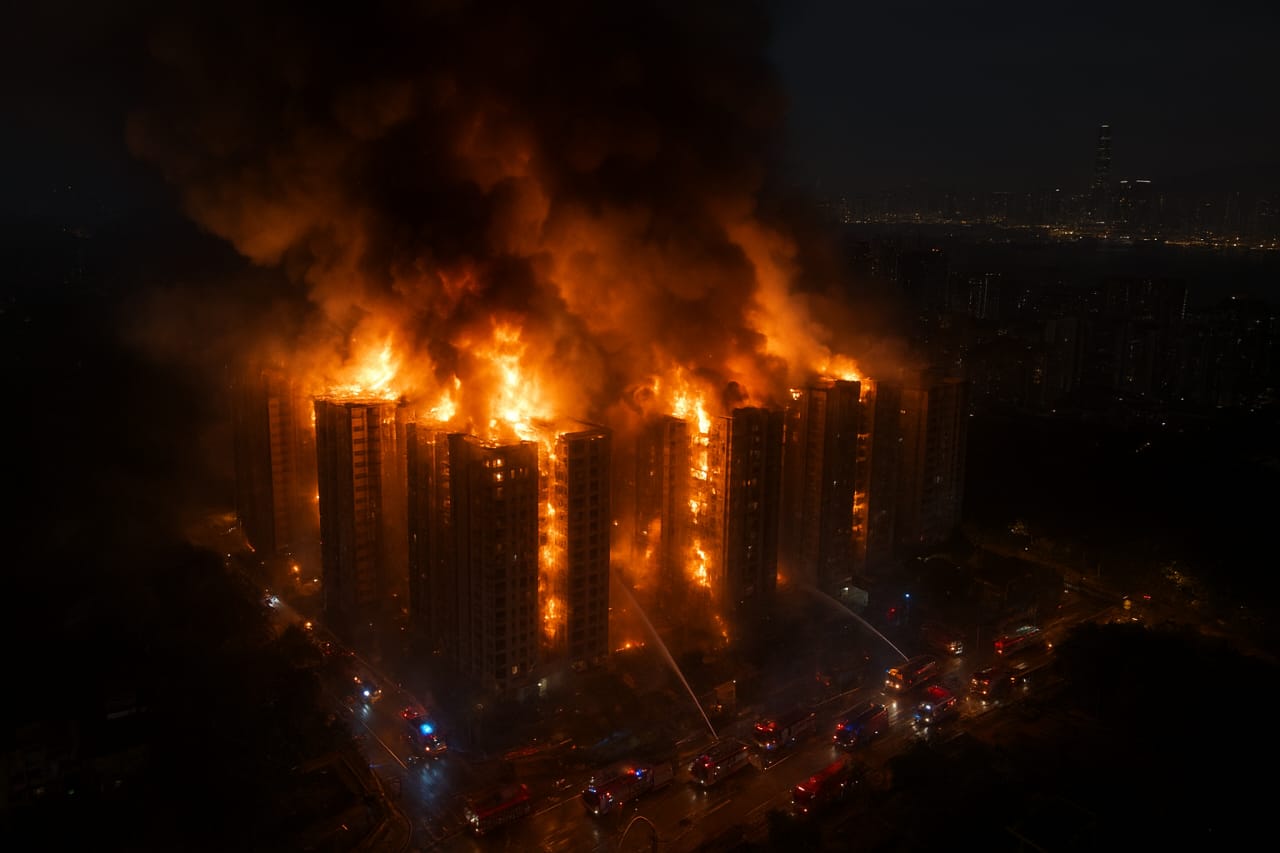
The Tai Po Fire: A Catastrophic Event
This week, Hong Kong witnessed one of its most devastating emergencies in two decades as a Level-5 fire engulfed the Wang Fuk Court residential complex in Tai Po. With 1,900 apartments housing over 4,600 residents, the blaze quickly spread across seven buildings, leaving over 55 dead and 279 missing at the time of reporting, including the tragic loss of a firefighter.
How the Fire Spread
The fire started rapidly, aided by strong winds and highly flammable construction materials. Residents reported that ongoing building renovations had left windows sealed, trapping smoke and heat in the units and impeding early warnings. Within minutes, the flames leaped across multiple buildings, creating a disaster of unparalleled magnitude in the region.
Construction Controversy Adds to the Crisis
Authorities have turned their focus on alleged construction failings. Investigations reveal that despite hiring a contractor for HK$42 million—almost double the price of alternative bids—the building materials used during renovations were substandard and flammable. Three individuals tied to the renovation project have already been arrested on manslaughter charges.
This tragedy has evoked comparisons to London’s 2017 Grenfell Tower fire, underscoring how safety oversights and poor-quality materials can result in catastrophic outcomes. Hong Kong officials have promised a transparent investigation into the issue, with a commitment to revisiting safety guidelines and regulatory enforcement.
A Community Mobilizes
Amid the chaos, Hong Kong’s residents demonstrated remarkable solidarity. Volunteers quickly organized grassroots relief efforts, from setting up temporary shelters to distributing food and water to displaced families. Social media platforms became a hub of aid coordination, outpacing the city’s official response in the early days of the crisis.
Crypto Industry’s Surprising Role
In an unexpected yet inspiring move, the cryptocurrency industry emerged as a key supporter in relief efforts. Binance, HashKey Group, and Avenir Group each pledged HK$10 million, while KuCoin contributed HK$2 million to aid emergency relief and reconstruction efforts. These contributions mark a significant moment in the industry, highlighting its role in addressing real-world crises.
If you’re looking to contribute to reconstruction efforts, the Binance Charity Foundation, a platform often involved in global relief initiatives, is one potential avenue to explore for donations and support.
What Happens Next?
Rescue operations remain ongoing, with search teams scouring damaged buildings for survivors. Parallel to these efforts, Hong Kong’s government faces increasing public demand for accountability and reform. Residents have emphasized the importance of not just rebuilding what was lost, but also ensuring that systemic housing issues are addressed to prevent future tragedies.
The Tai Po fire serves as a somber reminder of the price of neglect and the importance of community resilience and corporate responsibility in times of crisis.






